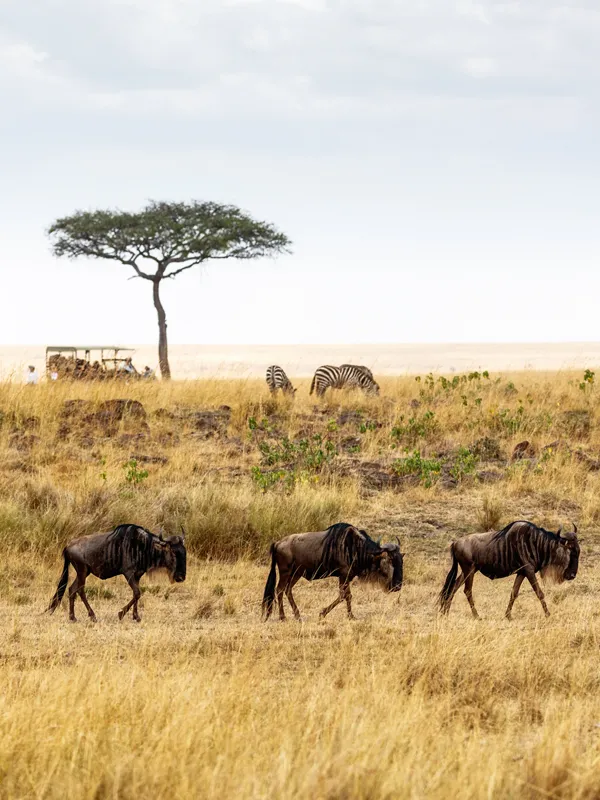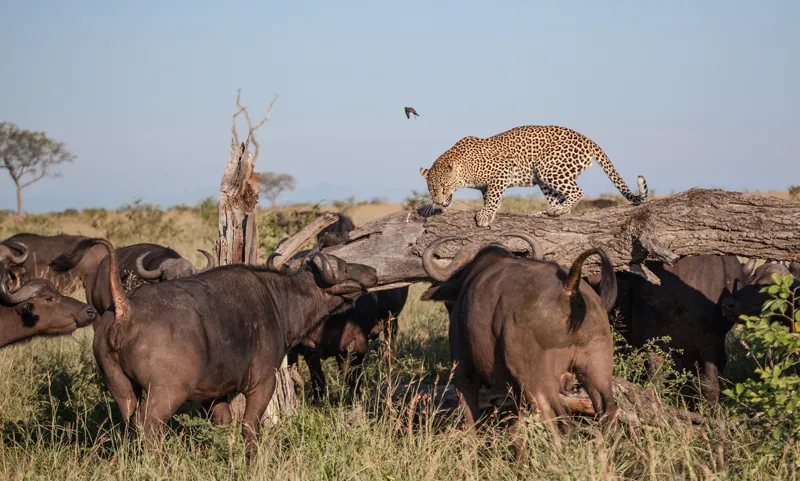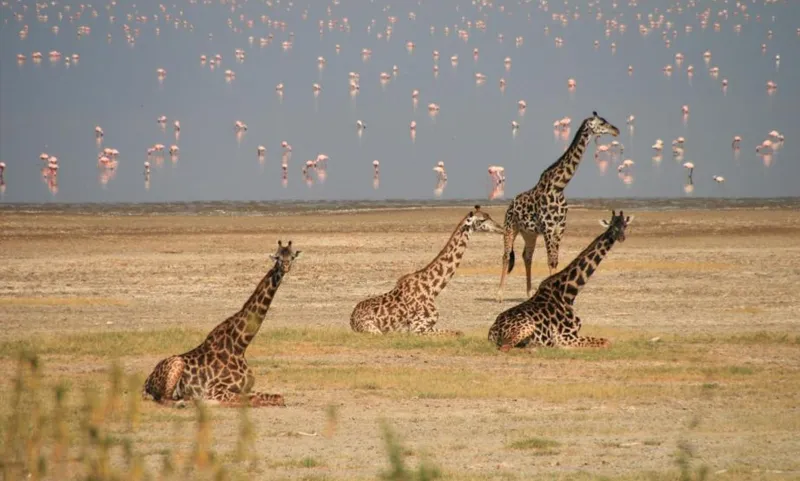
Serengeti National Park
Serengeti National Park, one of Africa’s most iconic wildlife reserves, is located in northern Tanzania and is famed for its vast plains, diverse ecosystems, and incredible wildlife. Covering approximately 14,750 square kilometers (5,700 square miles), the park is home to the world-famous Great Wildebeest Migration and offers some of the most extraordinary safari experiences on the planet.
The Serengeti, which means “endless plains” in the Maasai language, is part of the larger Serengeti ecosystem that includes the Ngorongoro Conservation Area, Maasai Mara National Reserve in Kenya, and several other protected areas. The park is a UNESCO World Heritage Site and a prime destination for nature lovers and wildlife enthusiasts.
How to Get there
There are multiple ways to reach Serengeti National Park:
By Air
Several domestic airlines offer flights from major cities such as Arusha, Kilimanjaro, and Dar es Salaam to airstrips within or near the park, including Seronera, Kogatende, and Grumeti airstrips.
Flights take approximately 1-2 hours, depending on the departure location.
By Road
From Arusha: A drive to the park takes about 6-7 hours via the Ngorongoro Conservation Area.
From Mwanza: A shorter route from the western side, taking around 3-4 hours.
While self-drive options are available, guided tours are recommended due to the park’s vastness and rugged terrain.
Attractions
Serengeti National Park offers a wide range of attractions and activities, including:
Game Drives – Morning and evening safaris offer excellent wildlife viewing opportunities.
Hot Air Balloon Safaris – A breathtaking way to see the Serengeti at sunrise.
Walking Safaris – Led by expert guides, these safaris provide an intimate experience with nature.
Birdwatching – Over 500 bird species can be found, including eagles, ostriches, and secretary birds.
Cultural Visits – Learn about the Maasai people and their traditions.
Photographic Safaris – Ideal for capturing stunning landscapes and wildlife.
Great Migration Viewing – Plan your visit to witness dramatic river crossings.
Night Game Drives – Available in selected areas to observe nocturnal animals.
Camping – Enjoy the raw beauty of Serengeti under the stars.
Exploring the Kopjes – These rocky outcrops are prime spots for spotting big cats.
Accomodation
Serengeti National Park offers a range of accommodations, from luxury lodges to budget-friendly campsites. Some top options include:
Luxury Lodges:
Four Seasons Safari Lodge Serengeti
Singita Sasakwa Lodge
&Beyond Serengeti Under Canvas
One Nature Nyaruswiga Serengeti
Mid-Range Lodges & Camps:
Serengeti Serena Safari Lodge
Serengeti Sopa Lodge
Mbuzi Mawe Serena Camp
Kati Kati Tented Camp
Budget Campsites:
Seronera Public Campsites
Lobo Public Campsites
Nyani Campsite
Best Time to Visit
June – October: Best for the Great Migration and wildlife viewing.
December – March: Calving season in the Southern Serengeti, attracting predators.
April – May: Low season with fewer crowds, but some areas may be inaccessible due to rains.
Frequently Asked Questions
1. Where is Serengeti National Park located?
Serengeti National Park is in northern Tanzania, bordering Kenya’s Maasai Mara to the north.
2. What animals can I see in the Serengeti?
Visitors can see the Big Five (lion, leopard, elephant, buffalo, rhino), along with cheetahs, zebras, wildebeests, giraffes, hippos, crocodiles, and numerous bird species.
3. When is the best time to visit the Serengeti?
The best time depends on your interests. The Great Migration is best viewed from June to October, while the calving season (December to March) is ideal for spotting predators.
4. How do I get to Serengeti National Park?
You can fly from Arusha, Kilimanjaro, or Dar es Salaam to various airstrips in the park, or drive from Arusha via the Ngorongoro Conservation Area.
5. Do I need a visa to visit Serengeti National Park?
Yes, most visitors need a Tanzanian visa, which can be obtained online or upon arrival at airports and border crossings.
6. Are safaris in Serengeti safe?
Yes, guided safaris are safe as long as visitors follow park regulations and instructions from guides.
7. What types of accommodations are available?
Serengeti offers luxury lodges, tented camps, and public campsites catering to different budgets and preferences.
8. Can I do a self-drive safari in Serengeti?
Yes, but it is recommended to have a 4×4 vehicle, proper maps, and experience in off-road driving.
9. Are night safaris available?
Yes, but only in designated areas such as private concessions and some lodges.
10. Can I visit Serengeti on a budget?
Yes, budget travelers can opt for camping, shared safaris, and using public transportation to nearby towns.

